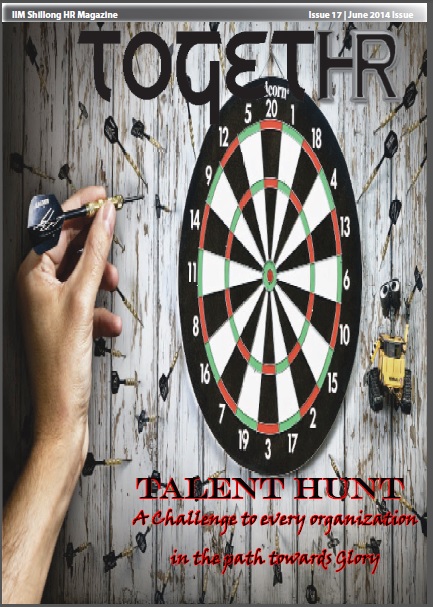Dr Madana Interviewed in IIM Shillong Magazine; Innovations in Learning Mar 3, 2015
 1)Please tell us about your journey as an L&D professional?
1)Please tell us about your journey as an L&D professional?
I am not a typical L&D person. I am an engineer by qualification and drew experience from several fields such as engineering, manufacturing, project management, quality management, etc. The L&D stream attracted me as it makes a difference to the lives of people. I made a conscious choice to switch to an L&D role. I started my career as a facilitator and soft skill trainer. But due to organizational needs, I was put into a more responsible role of managing a team. My vision for L&D department is to move up the value chain to become a performance consultant rather than purely being a training provider. We need to be able to help in organizational activities which impact business revenue, customer satisfaction, productivity, attrition, cost management etc.
2) How has L&D contributed towards the growth of UST Global?
In any IT company, providing the right talent with the right skill set to meet the client’s needs is the basic objective of the L&D department. Growth requires additional skills and the L&D department trains people for those skills. Thus the L&D department contributes to the growth of the organisation in a very intrinsic manner. However, technical training is just the base of the pyramid. There are other skills too which need to be delivered. Different levels of jobs require different skills like communication, relationship, strategy, selling, project management, account management and team building. At higher levels, one needs to motivate people and manage their performance, execute leadership skills, formulate business strategies, build business and selling skills. L&D department has the responsibility to provide the right skills to the right people at all levels. This has contributed to the rise in business for the company. This in turn contributes not only to revenue growth from existing clients but also helps to attract new clients.
3) How to ensure that the people are motivated enough to take up learning?
By continuously making them realize that their development is their personal responsibility. If you’re not interested in your career, no one else is going to be- because you are your most significant asset. We can help them by making them choose to learn. Further, we make the learning personal for them by giving them two to five programs which would help them take up challenges in the current role or prepare for the next role. This has made a significant difference.
Between 2013 and 2014 E-Learning has grown by almost 300%.
4) Please share with us some of your initiatives which brought about impactful changes?
We have been focusing on roles that make a big impact. We are targeting the key roles that impact the revenue and growth of the organization. I can train ten people or one people m a n a ger. This is what I call value multiplication effect. Train one manager who impacts ten to fifteen people who work under him/her. We are in the process of identifying such high impact roles and providing them with necessary developmental opportunities. We will focus on account managers who manage relationship with clients, we will focus on sellers who open up new opportunities for us, we will focus on project managers who are key to customer satisfaction and profitability.
5) What are your views on the use of virtual world/E-Learning for L&D?
It is the future of learning. The world is shrinking and the organization is getting dispersed. The conventional classroom training won’t work. People are looking for learning when and where they need it. E-learning helps not only the organization but the employees too can learn at their own pace and as many times as they want till they acquire the skill. Choice becomes so much more when it is E-learning.
6) How have you cultivated an environment of learning in UST Global?
Learning culture isn’t a choice. We drive it by making it relevant, personalized and available to employees through E-Learning/virtual learning. We are moving into providing learning through their smart phones/ tablets. Experts say that the attention span of an adult has shrunk from 18 minutes in 2008 to 3 minutes now. So we will continue making learning experiences quick and impactful. We are trying to establish the relationship between learning and real business through revenue, profitability, customer satisfaction, employee engagement, retention, etc. Then, everyone will be able to see what learning is doing to the organization. Then, learning becomes an integral part of doing business. Once everyone understand the business impact of learning, the organisation will become a learning organisation.
